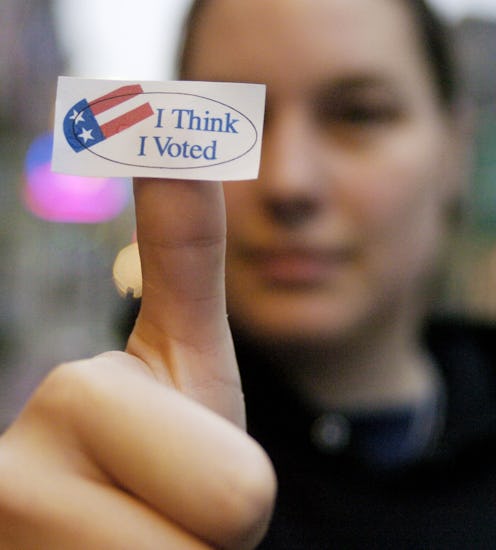Life
Sojourner Truth Is Getting Her Own Statue In New York For A Really Important Milestone

2017 has seen a renewal in the public’s interest in statues. Dozens of Confederate monuments have been removed or proposed to be removed after a white supremacist rally in Charlottesville — protesting the removal of Confederate Gen. Robert E. Lee resulted in the — death of activist Heather Heyer. On Monday, Nov. 6, Governor Andrew M. Cuomo and Lieutenant Governor Kathy Hochul of New York made a different kind of announcement about statues. No, they weren’t removing any: They announced that Sojourner Truth and Rosalie Jones, women’s suffragists, would be getting their own public statues in New York State.
The two statues depicting Truth and Jones will be placed at separate locations. They will join just two other statues of women located on New York state property, Dr. Mary Walker, one of the first female surgeons in the U.S., and frontierswoman Mary Jemison. This announcement came on the 100th anniversary of women’s suffrage in New York. On Nov. 6, 1917, white women were allowed to vote for the first time, but it took until the Voting Rights Act of 1965, which criminalized discrimination on the basis of race, for many people of color to be able to vote in the U.S. Many white women in the women’s suffrage movement were openly hostile to the idea of Black voters: Susan B. Anthony, a noted women’s suffragist, once said, “I will cut off this right arm of mine before I will ever work or demand the ballot for the Negro and not the woman.”)
Truth (born Isabella Baumfree), who was a Black woman, never was granted the right to vote in her lifetime. Truth was born into enslavement in Ulster County, New York around 1797 but escaped in 1826 with her infant daughter. In 1828, Truth became the first Black woman to win a court case to recover her son against a white man.
Truth’s personal activism inspired her public persona. She traveled across the country speaking in favor of abolition and suffrage. Her most famous speech, “Ain’t I a Woman?”, was delivered extemporaneously at the 1851 Ohio Women's Rights Convention. In it, Truth discussed the disparate treatment of Black and white women:
“That man over there says that women need to be helped into carriages, and lifted over ditches, and to have the best place everywhere. Nobody ever helps me into carriages, or over mud-puddles, or gives me any best place! And ain't I a woman?”
Truth died in 1883, 37 years before the 19th Amendment passed and 82 years before the Voting Rights Act of 1965. Truth’s statue will stand on the Empire State Trail in Ulster County near where she was born, according to a press release.
Jones was born the same year Truth died, in 1883. Her statue will also stand near her birthplace, Cold Spring Harbor State Park on Long Island. Jones, a lifelong women’s rights activist, led a 150-mile long suffrage hike in 1912. After walking for 2 weeks, Jones and other activists gave the Governor-elect William Sulzer a petition for women’s suffrage.
In addition to these statues, New York celebrated women’s suffrage with commemorative stickers for those who voted in yesterday’s election. The “I voted” stickers feature a picture of Jones and read, “Honoring 100 Years of a Woman’s Right to Vote.” The New York State Women’s Suffrage Commission is also planning events and programs through 2020 (the centennial of the 19th Amendment) to celebrate women’s suffrage. The Commission plans to find the original copy of the Declaration of Sentiments, which was a foundational document in U.S. women’s suffrage drafted at the Seneca Falls Convention in 1848.
Erecting these statues and planning programs is not meant only to honor the past: New Yorkers are looking towards the future as well. Lieutenant Governor Hochul, the chair of the Women’s Suffrage Commission said in a statement: “I am inspired by the next generation of young women who will carry the torch and fulfill our vision of equality and create a culture of respect and inclusion for all women, regardless of race, ethnicity, gender at birth, or sexual orientation.”